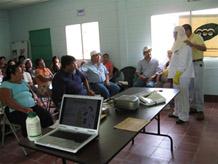Label Review Training: Module 3: Special Issues, Page 5
Section 2: How should I review precautionary statements?
Determining Precautionary Statements
The results of six acute toxicity studies performed with the product formulation are the primary tool for determining the signal word, hazards to humans and domestic animals, personal protective equipment (non–Worker Protection Standard), and first aid statements. The acute oral, acute dermal, and acute inhalation studies evaluate systemic toxicity via the designated routes of exposure; the primary eye irritation and primary skin irritation studies measure irritation or corrosion; and the dermal sensitization study evaluates the potential for allergic contact dermatitis. Products are assigned a toxicity category (I – IV) for each type of exposure based on the results of five of the six studies (see Table 1 in Chapter 7 of the Label Review Manual). The results of these six acute toxicity studies must be known in order to determine the appropriate labeling language.
Reregistration eligibility decision (RED) documents and registration review decisions may also specify personal protective equipment, engineering controls, and user safety recommendations. Reregistration refers to EPA's review of older pesticides (those initially registered prior to November 1984) under the Federal Insecticide, Fungicide, and Rodenticide Act (FIFRA) to ensure that they meet current scientific and regulatory standards. Reregistration began in 1988 and is now complete. EPA has now moved on to registration review, which is EPA's program for systematically reviewing all registered pesticides every 15 years to make sure that every pesticide can still perform its intended function without unreasonable adverse effects on human health or the environment.
In any case where a pesticide has been through a registration review or reregistration review, the decision documents for that review must be consulted to determine if new label requirements of any kind were imposed as a result of the review. Such changes will typically be in a table of required label changes at the back of the decision document. Both REDs (for chemicals registered before 1984) and new registration review documents are accessible from the Office of Pesticide Programs [OPP] homepage under “Featured Sites.”
In cases where RED or registration review decision specifications differ from those determined by the acute toxicity categories, the  most protective statements must be employed. The regulations allow use of a higher signal word for human hazard when necessary to prevent unreasonable adverse effects on humans and the environment.
most protective statements must be employed. The regulations allow use of a higher signal word for human hazard when necessary to prevent unreasonable adverse effects on humans and the environment.
Resources
For recommended precautionary statement language, consult Pesticide Registration (PR) Notice 2000-5. To learn more about the four toxicity categories see Table 1 in Chapter 7, Section II.B of the Label Review Manual. To check the status of each chemical in the reregistration review process, and to find links to a chemical's Web page and any available RED documents or fact sheets, visit EPA's Pesticide Reregistration Status Web page.
Page 5 of 43
Previous Page Next Page
